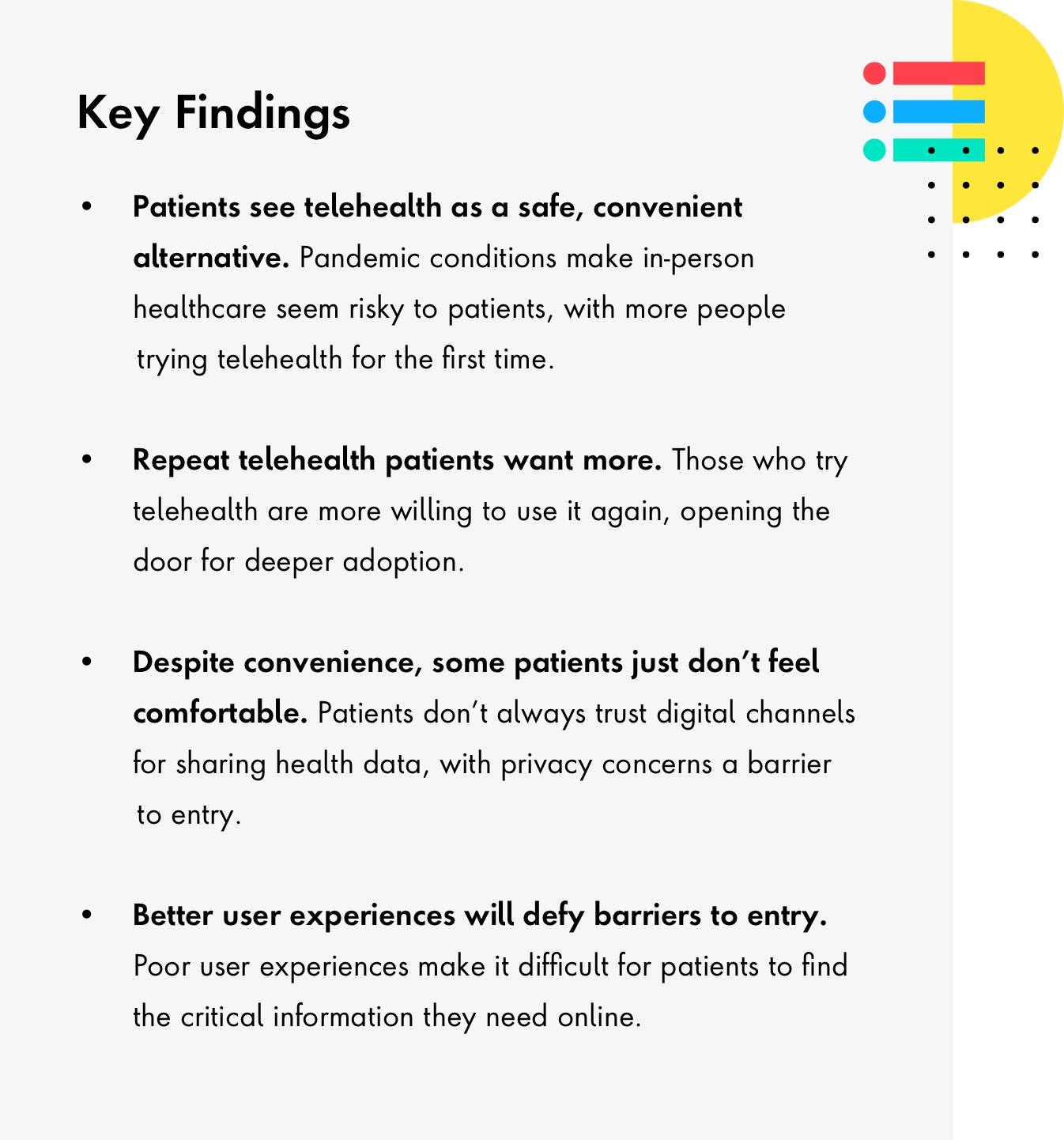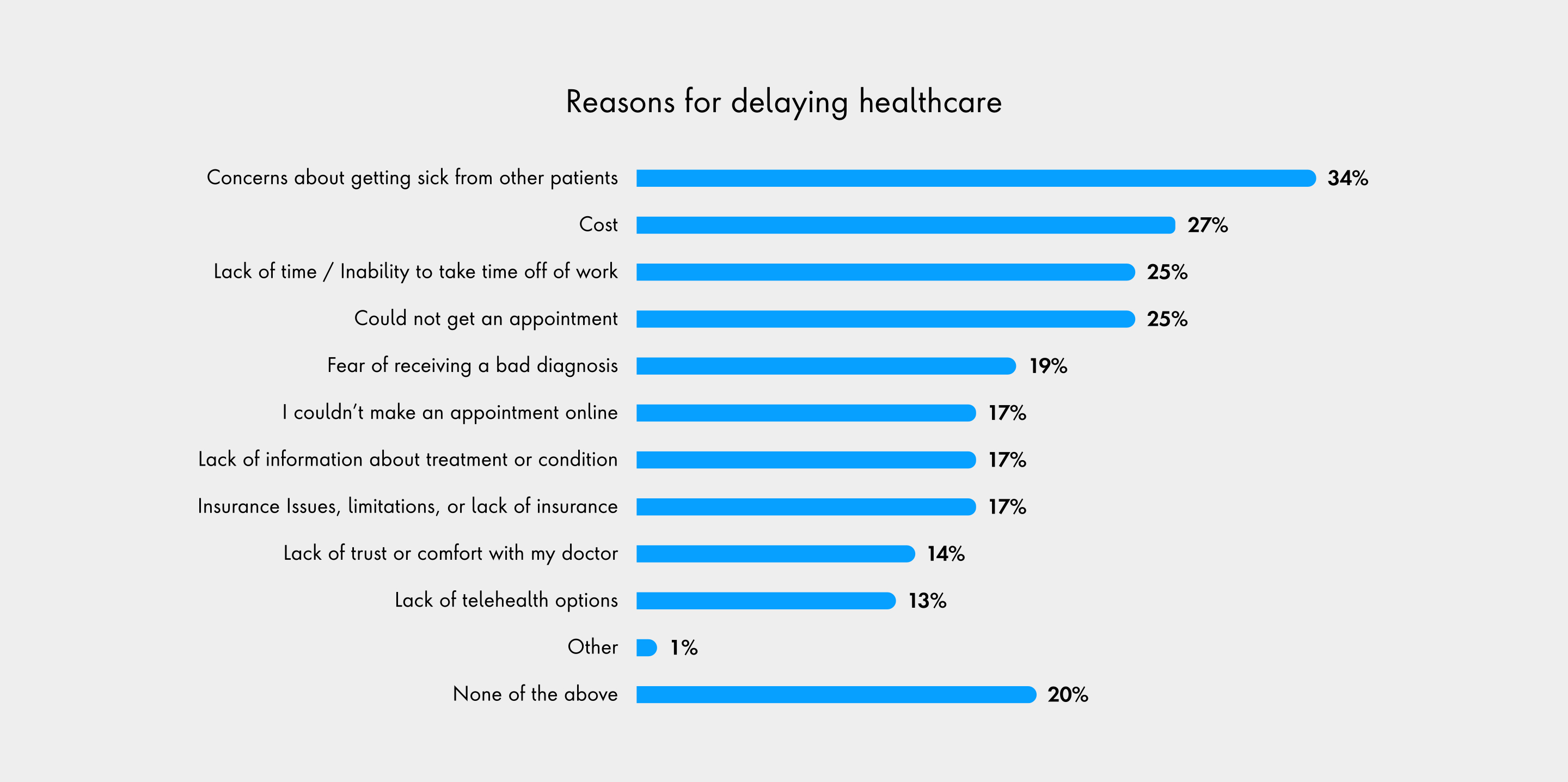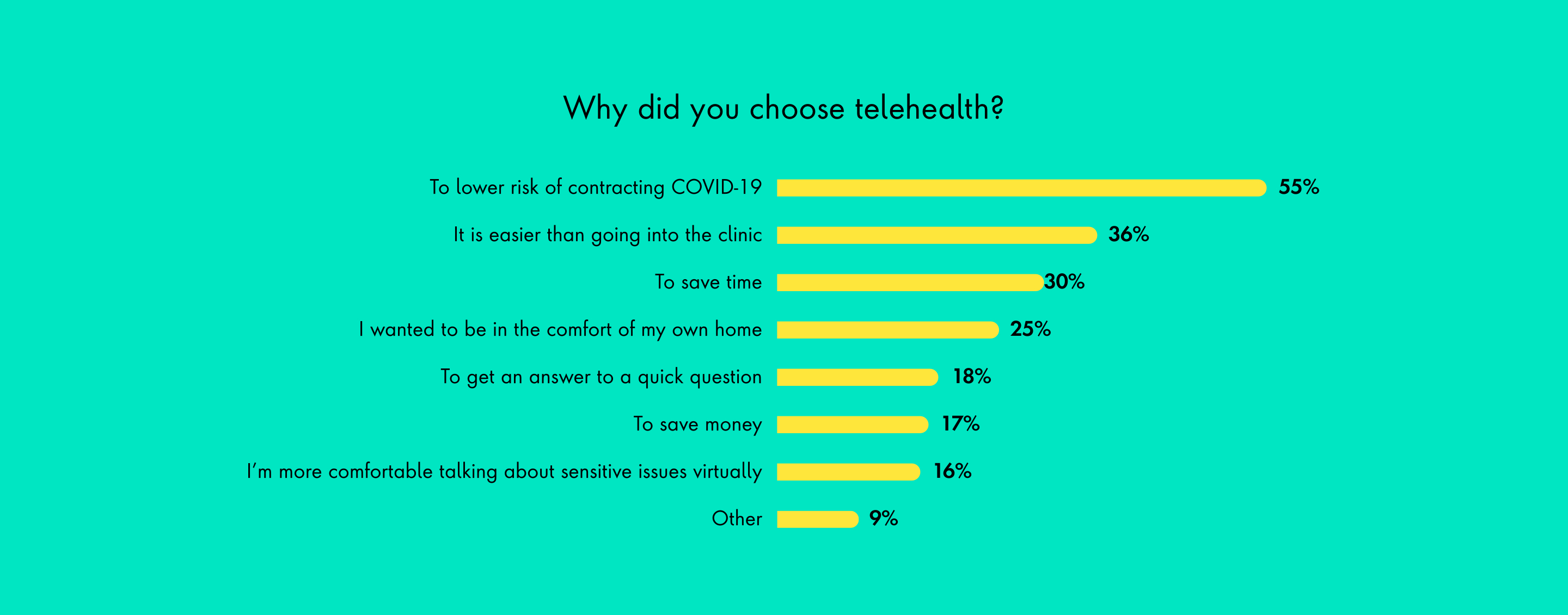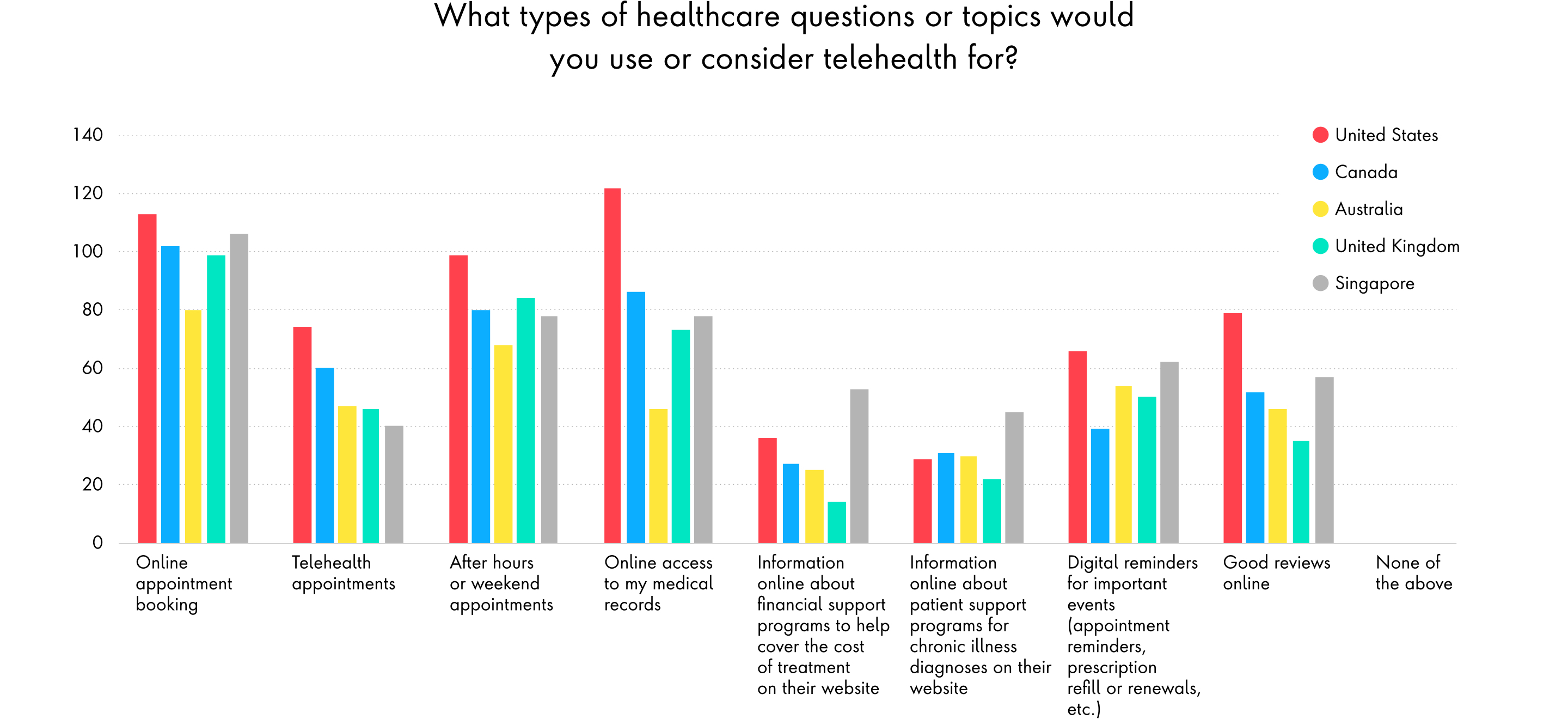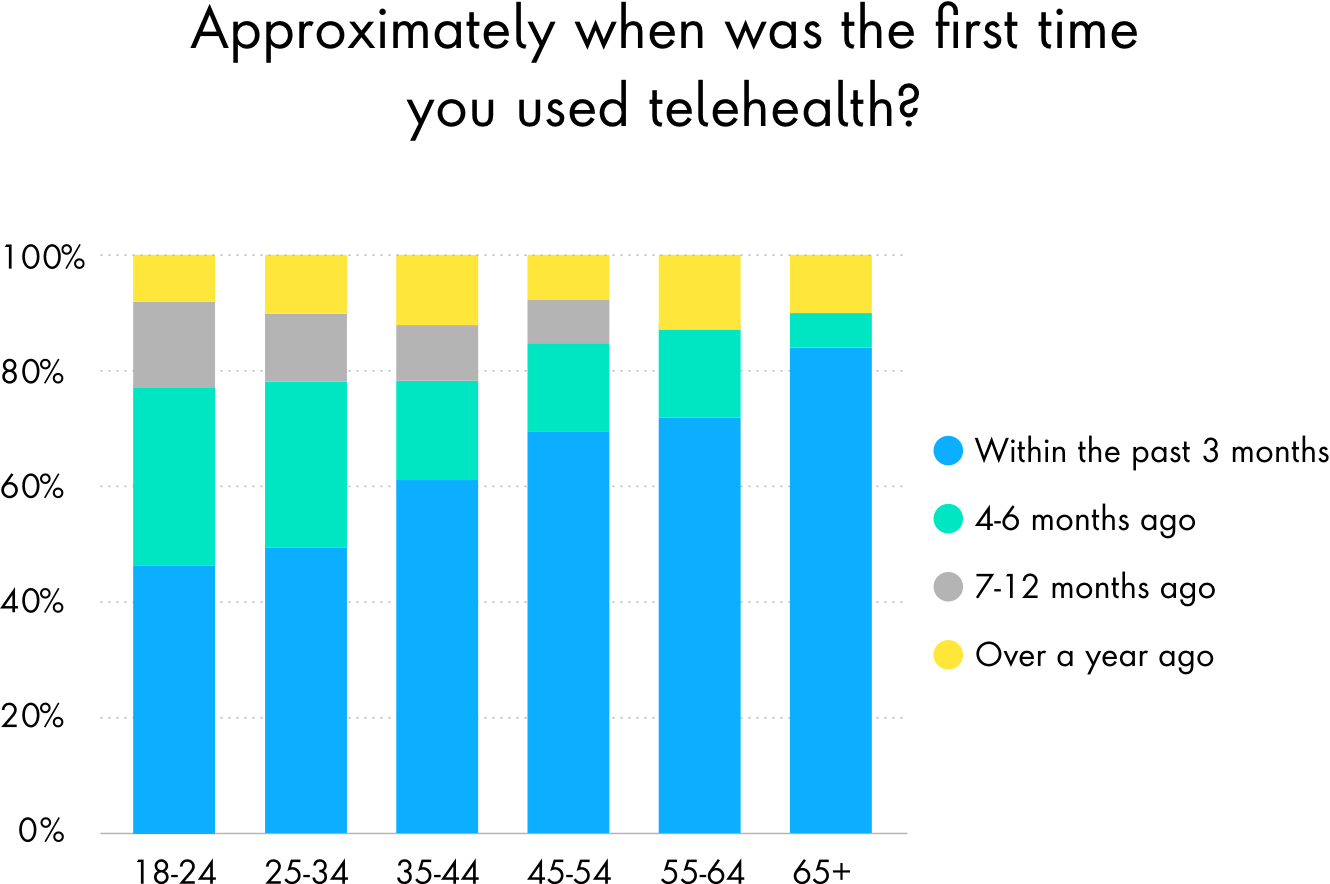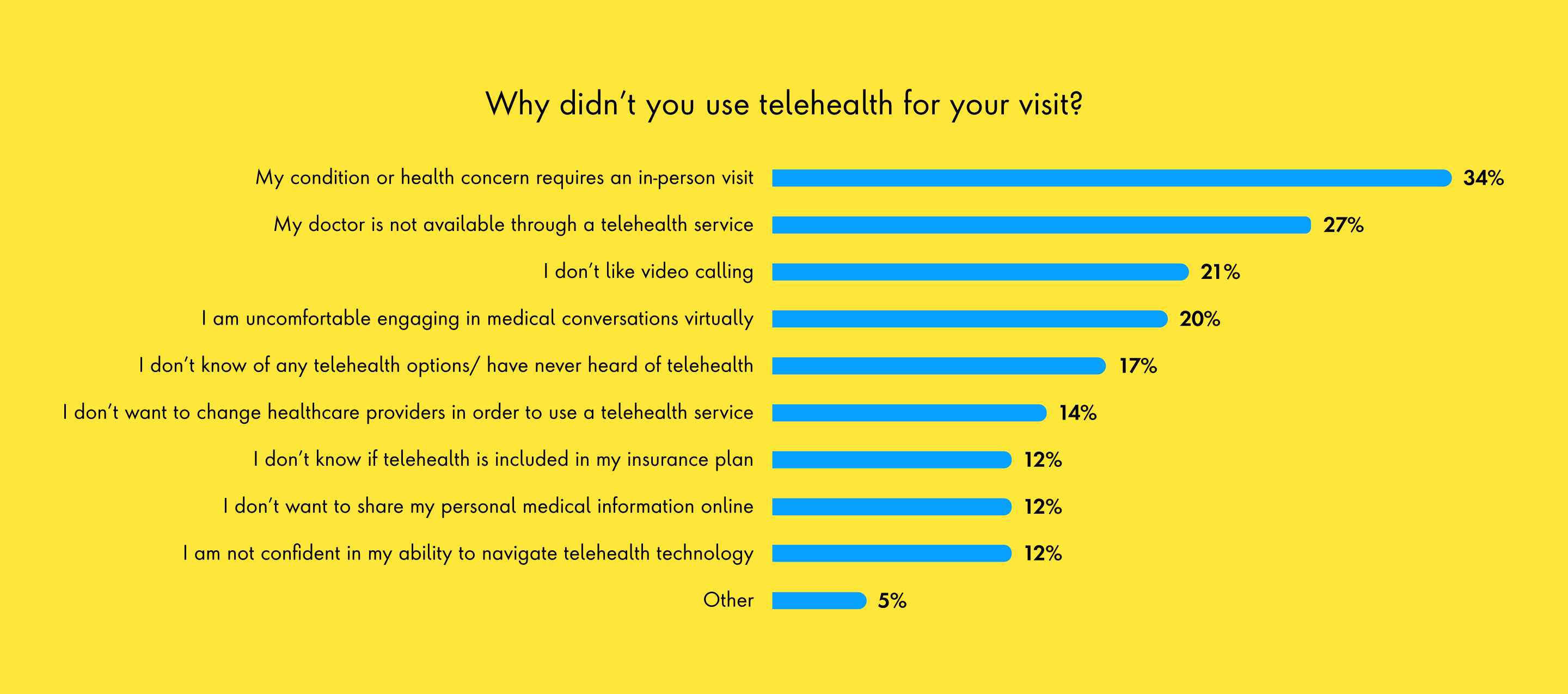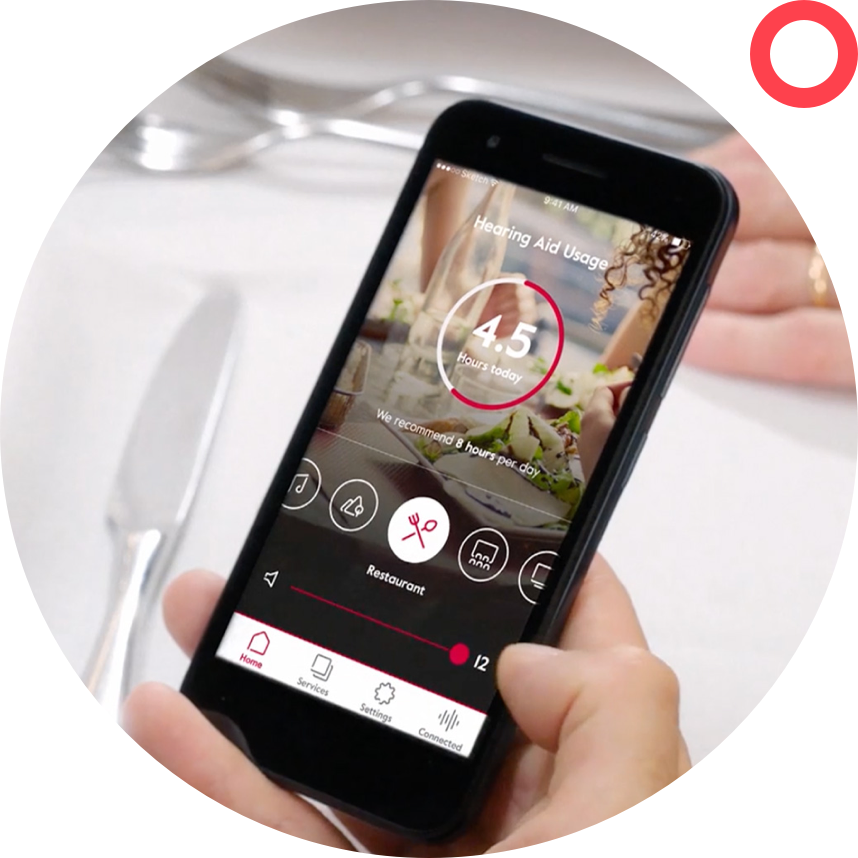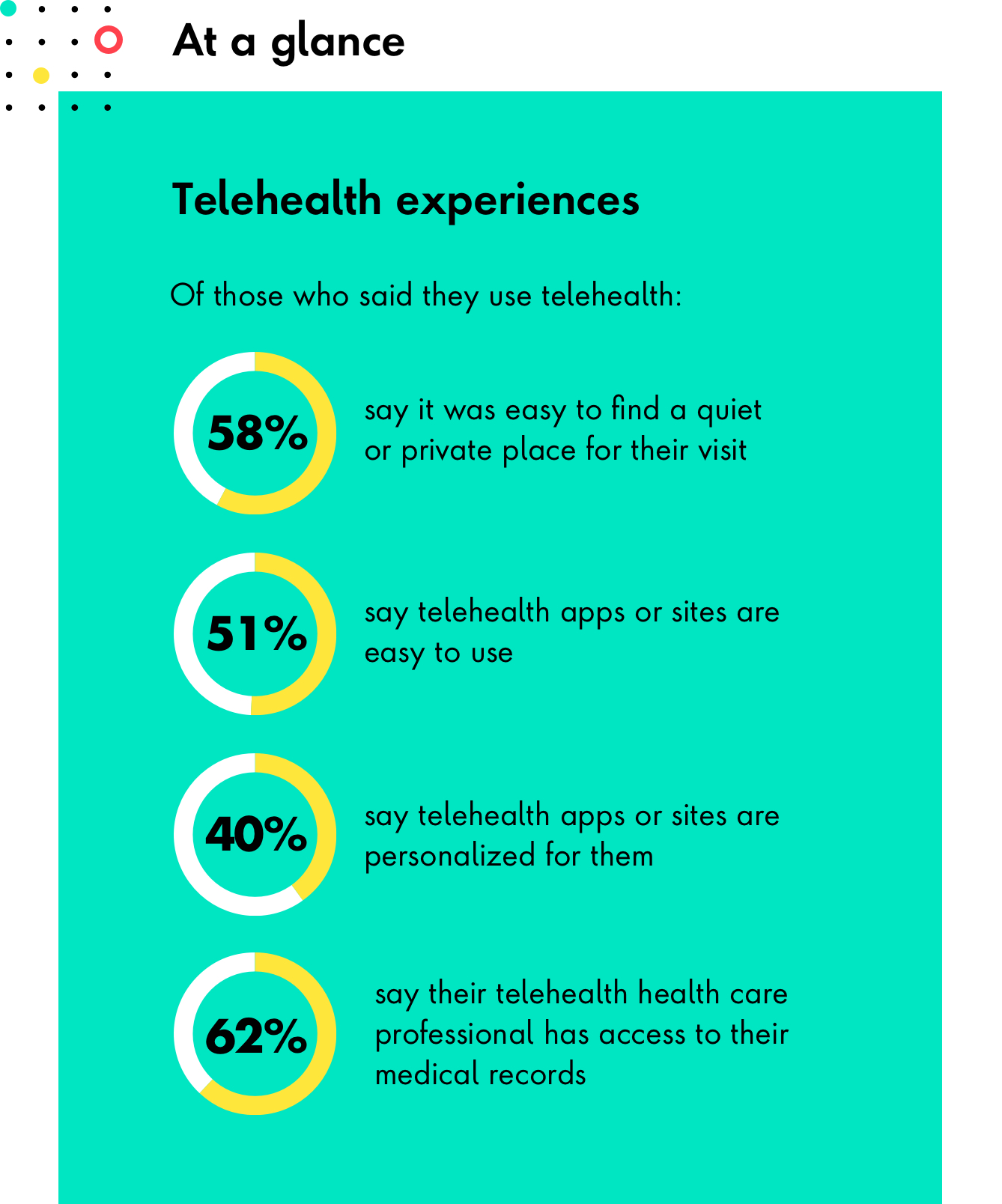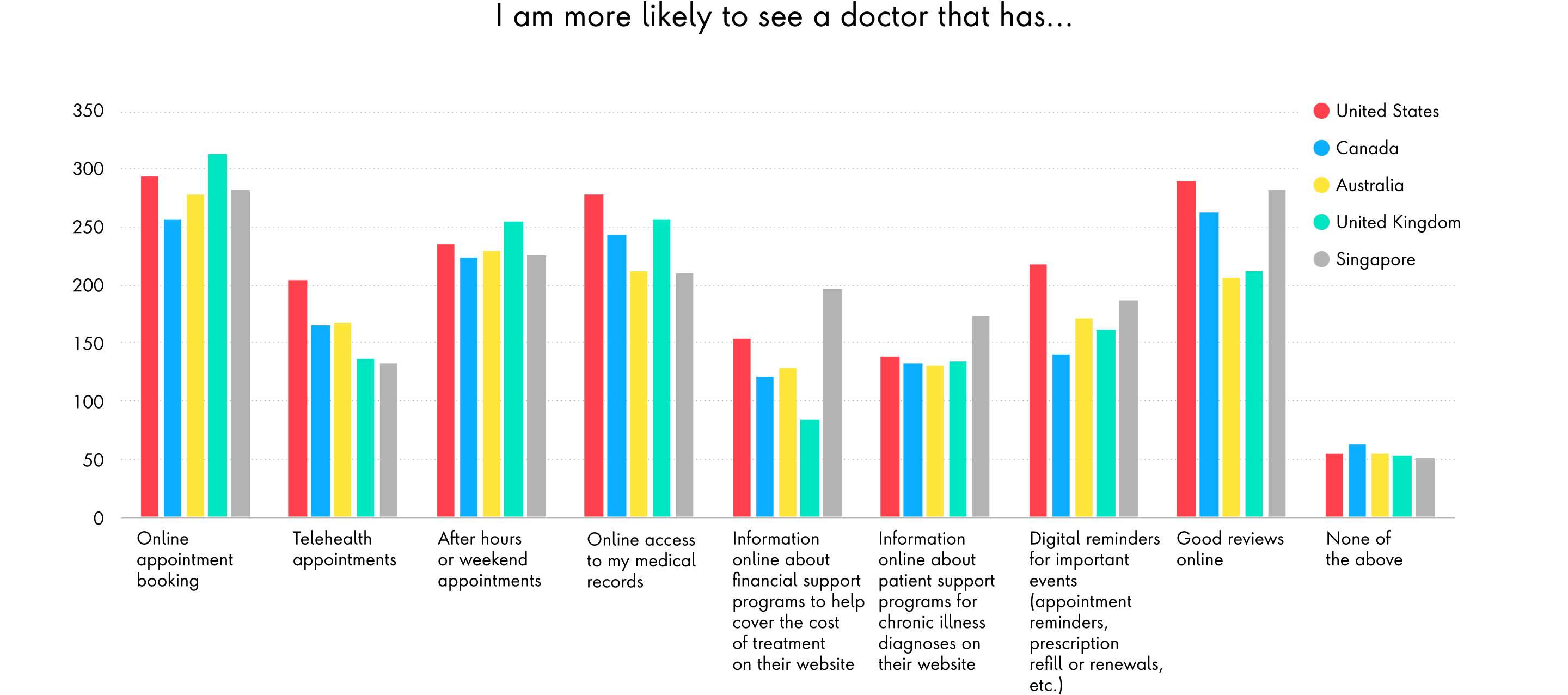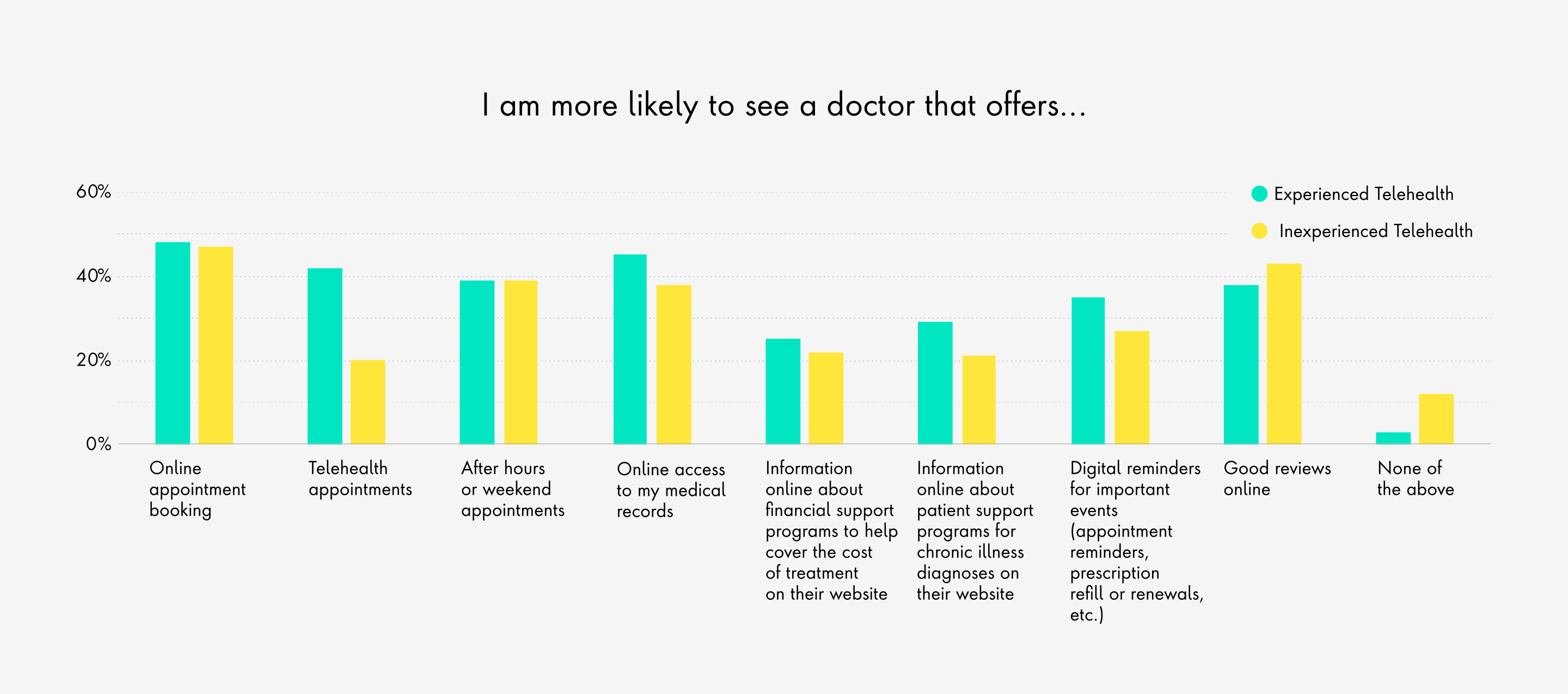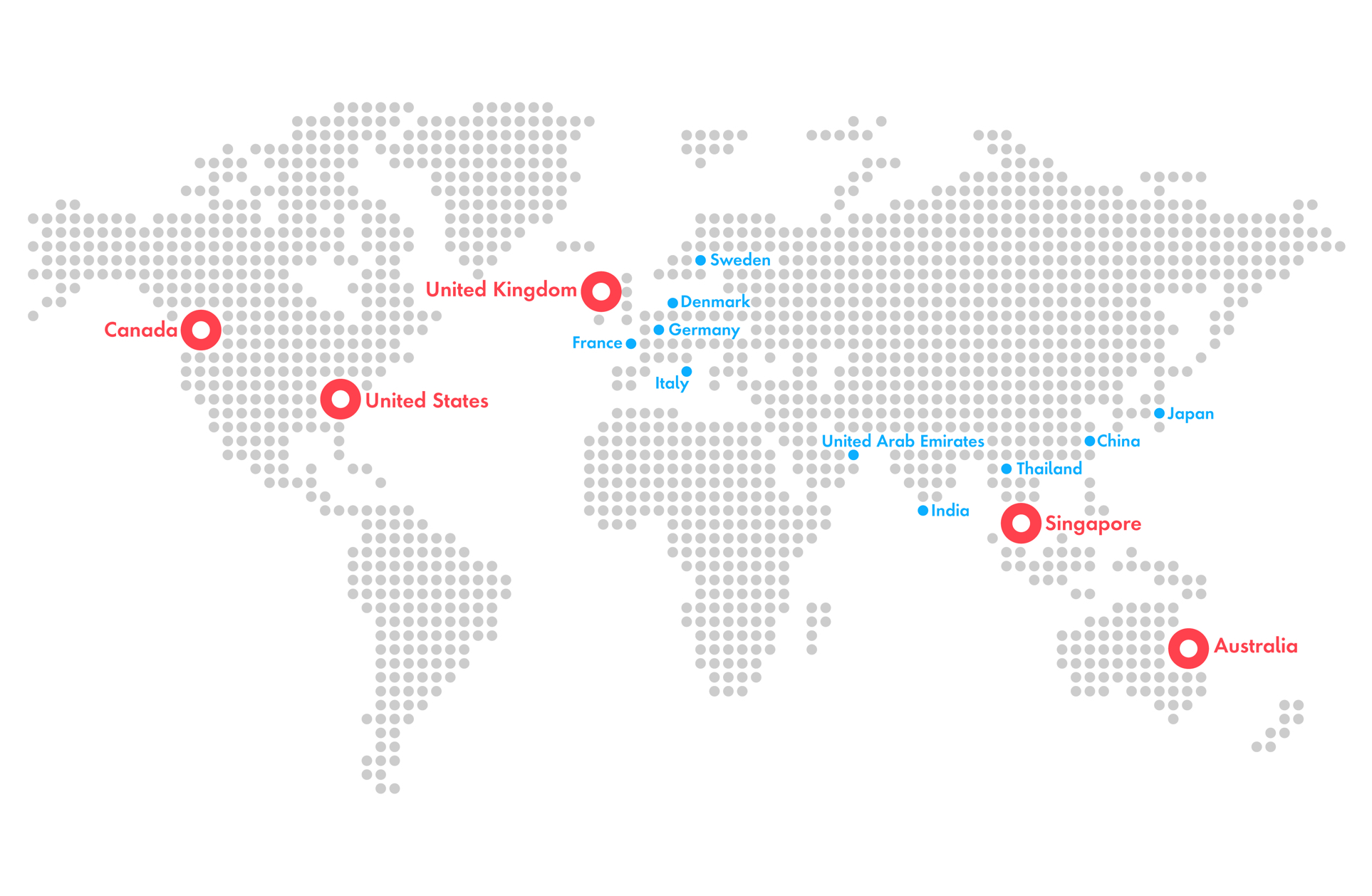More accessibility to telehealth via private and government-led programs also led to an increase in adoption. The United States government, for example, expanded telehealth services to around 62 million Medicare recipients, allowing more people to get access to the service. Telehealth services also help providers. Research shows that emergency rooms equipped with telehealth services reduces unnecessary ambulatory transfers by as much as 56 percent and improves response time by as much as 44 minutes – making it easier for emergency responders to deliver critical care more efficiently, while further reducing cost for patients who could be treated another way.
Companies have been working to ease providers’ burden of care through new technologies. In China, JD Health, WeDoctor and Alibaba’s Ali Health are increasing telehealth services. In the UK, Babylon Health is deploying chatbots to help patients identify COVID-19 symptoms though a quick series of online questions. In the U.S., services like Teladoc and Anthem’s LiveHealth are making it easier for patients to connect with physicians. In France, e-health platform Anamnesis is using artificial intelligence to collect and analyze patient data to provide doctors with more comprehensive information ahead of a consultation.


